Abstract
Cosonicated mixtures of egg phosphatidylcholine and small amounts (less than 5% wt/wt) of triolein have been studied by 13C NMR spectroscopy. The 50.3-MHz 13C NMR spectrum of vesicles preparations containing 90% isotopically substituted [1-13C]triolein showed two carbonyl resonances at chemical shift values that indicate hydrogen bonding of H2O molecules with the carbonyl groups. The extent of hydration, estimated from the chemical shift values that indicate hydrogen bonding of H2O molecules with the chemical shift values (173.07 ppm and 172.39 is approximately 50%. The data suggest that the triolein is located in the bilayer with the three carbonyl groups at the aqueous interface. The acyl chains are extended toward the bilayer interior, with a conformation of the glyceryl region such that the primary (alpha) carbonyls are closer to the aqueous medium than is the secondary (beta) carbonyl. Thus, triolein is present in the bilayer in an orientation appropriate for enzymatic hydrolysis, with the second substrate (H2O) in close proximity to the hydrolytic site, and with a conformation that could explain, in part, enzymatic specificity for hydrolysis at the alpha position. Spectra of vesicles containing greater than or equal to 3% triolein showed two additional carbonyl peaks characteristic of pure (neat) triolein. This allowed a determination of the maximum solubility (approximately 2.8%) of surface-oriented triolein in the bilayer phase. Beyond this limit all excess triolein partitions into a separate oil phase.
Full text
PDF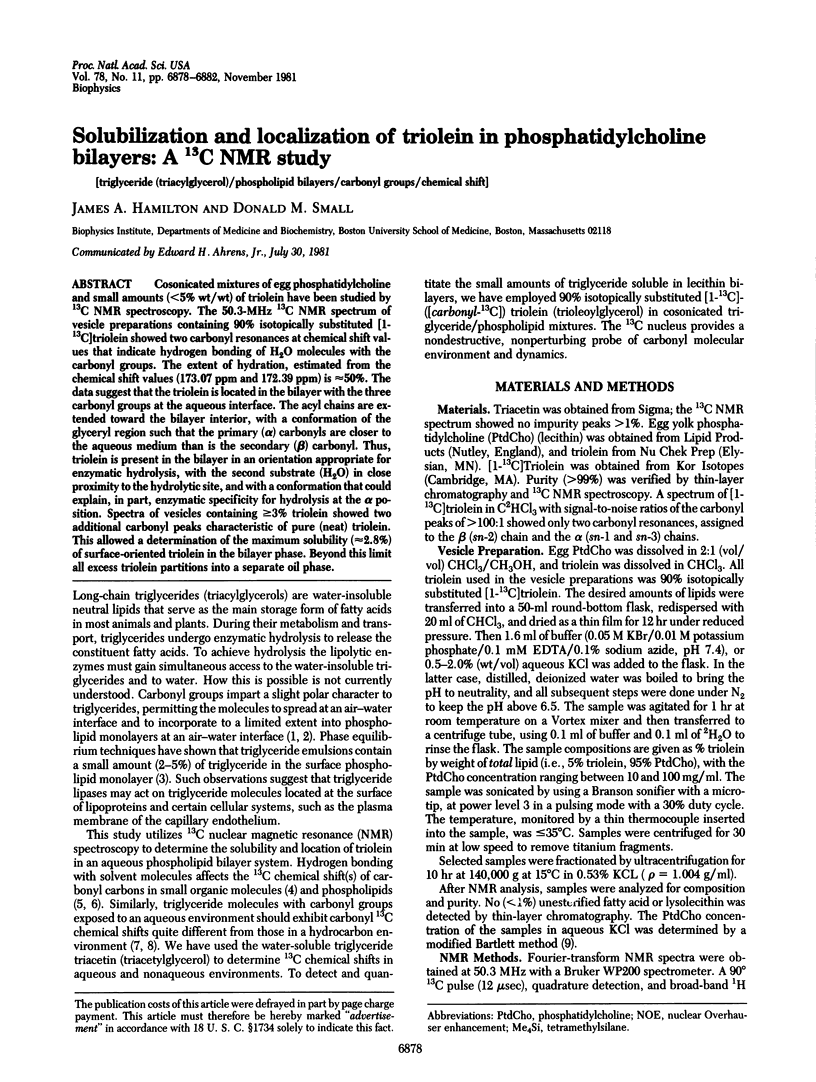
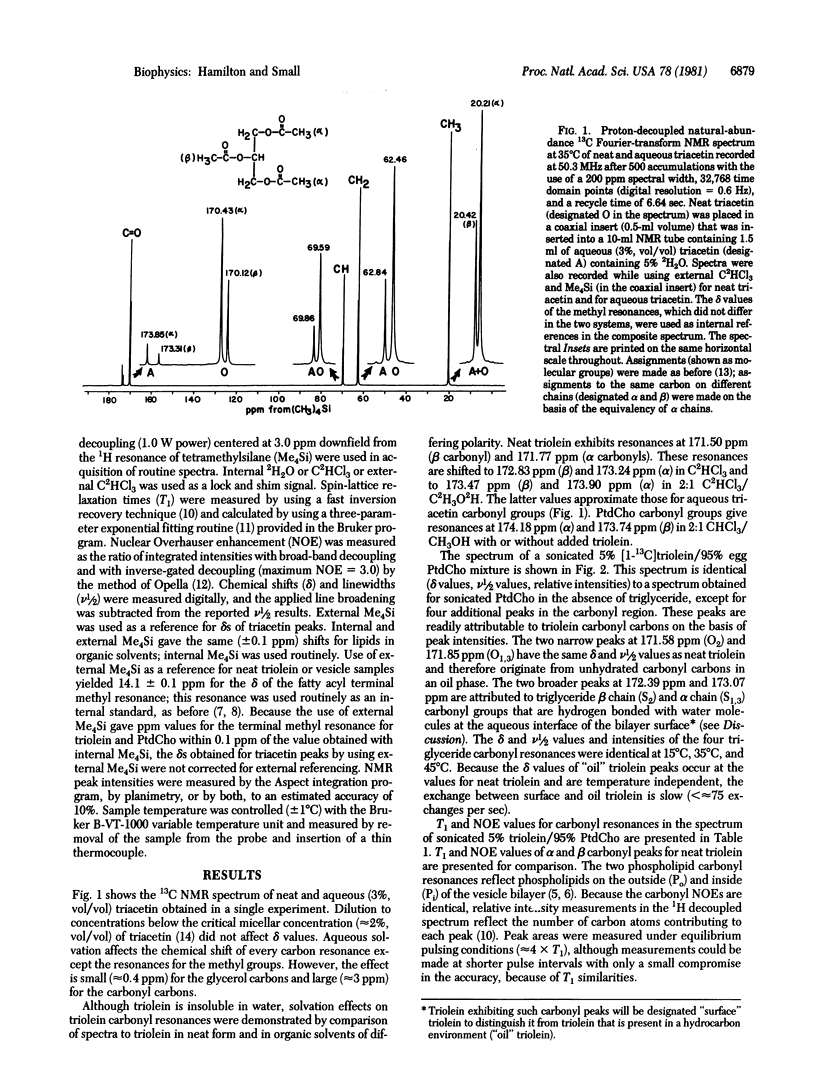
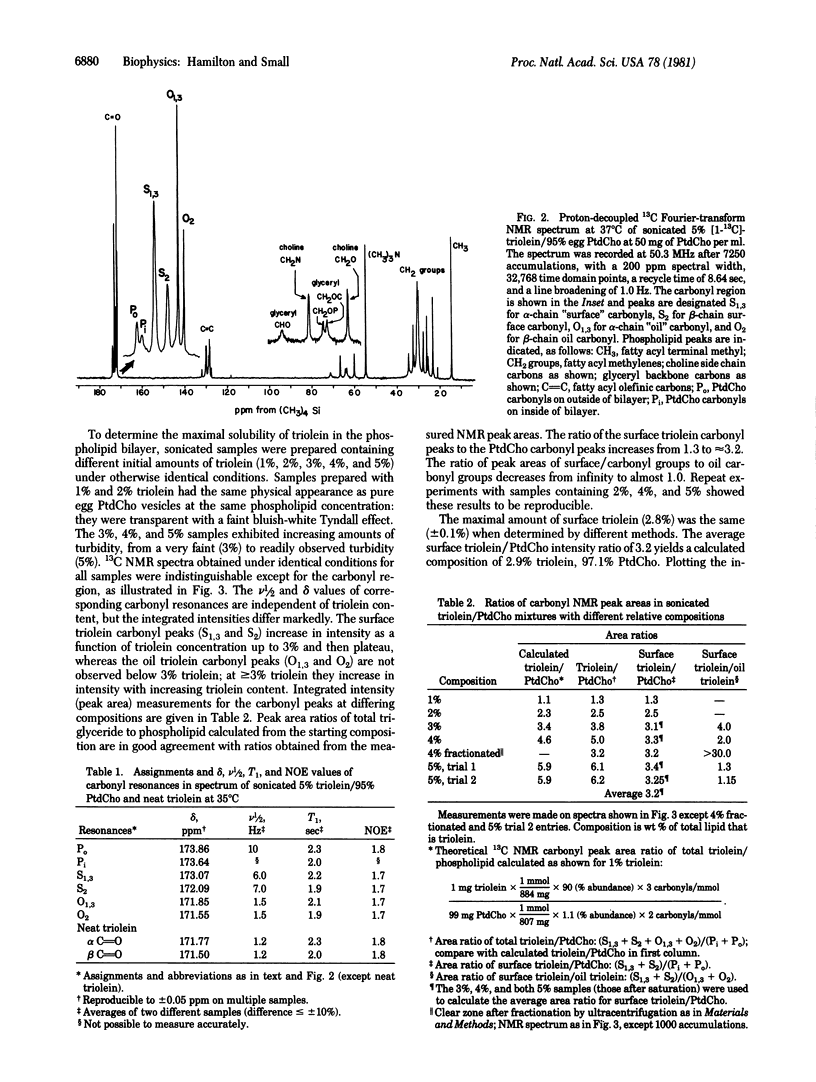
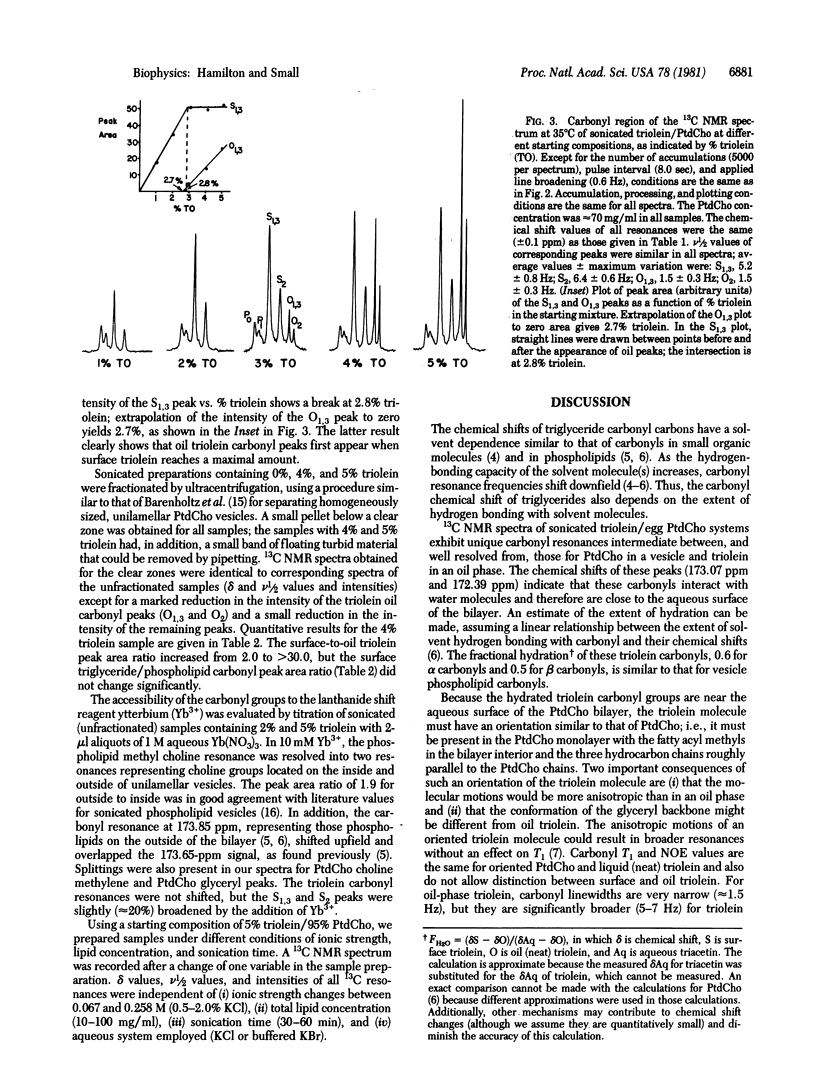
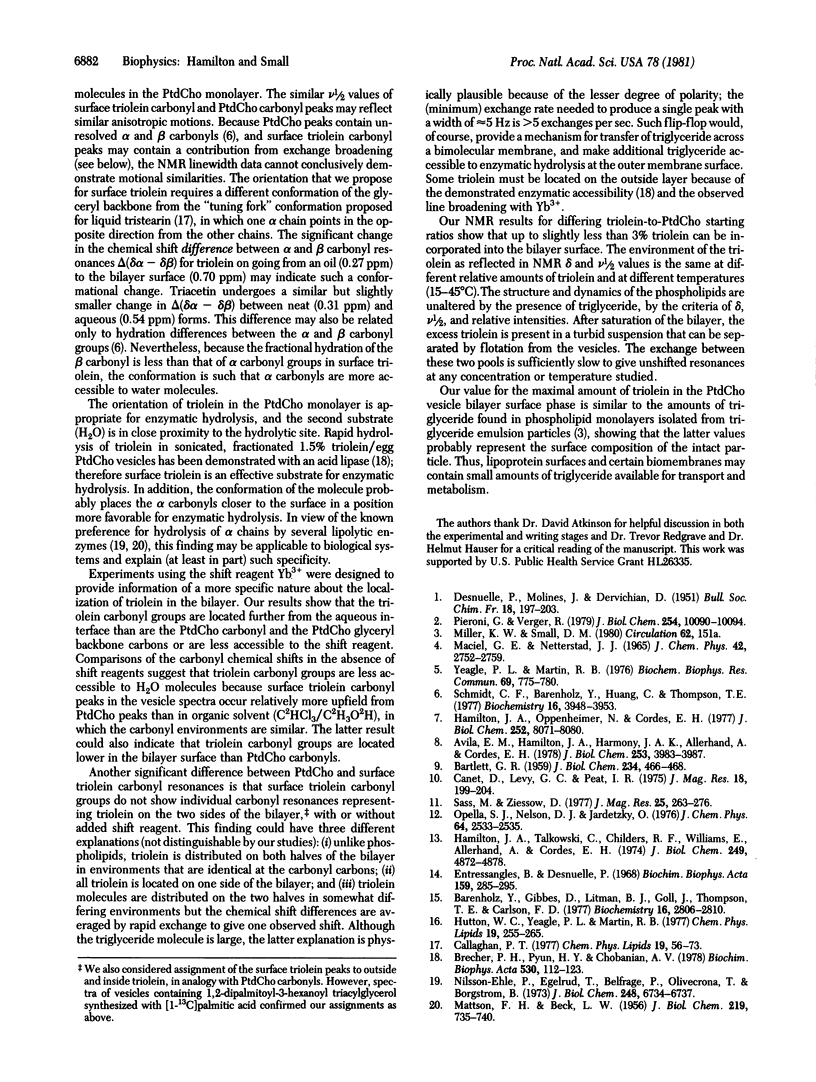
Selected References
These references are in PubMed. This may not be the complete list of references from this article.
- Avila E. M., Hamilton J. A., Harmony J. A., Allerhand A., Cordes E. H. Natural abundance 13C nuclear magnetic resonance studies of human plasma high density lipoproteins. J Biol Chem. 1978 Jun 10;253(11):3983–3987. [PubMed] [Google Scholar]
- BARTLETT G. R. Phosphorus assay in column chromatography. J Biol Chem. 1959 Mar;234(3):466–468. [PubMed] [Google Scholar]
- Barenholz Y., Gibbes D., Litman B. J., Goll J., Thompson T. E., Carlson R. D. A simple method for the preparation of homogeneous phospholipid vesicles. Biochemistry. 1977 Jun 14;16(12):2806–2810. doi: 10.1021/bi00631a035. [DOI] [PubMed] [Google Scholar]
- Brecher P., Pyun H. Y., Chobanian A. V. Cholesteryl ester and triglyceride hydrolysis by an acid lipase from rabbit aorta. Biochim Biophys Acta. 1978 Jul 25;530(1):112–123. doi: 10.1016/0005-2760(78)90131-5. [DOI] [PubMed] [Google Scholar]
- Entressangles B., Desnuelle P. Action of pancreatic lipase on aggregated glyceride molecules in an isotropic system. Biochim Biophys Acta. 1968 Jun 4;159(2):285–295. doi: 10.1016/0005-2744(68)90077-6. [DOI] [PubMed] [Google Scholar]
- Hamilton J. A., Oppenheimer N., Cordes E. H. Carbon-13 nuclear magnetic resonance studies of cholesteryl esters and cholesteryl ester/triglyceride mixtures. J Biol Chem. 1977 Nov 25;252(22):8071–8080. [PubMed] [Google Scholar]
- Hamilton J. A., Talkowski C., Childers R. F., Williams E., Allerhand A., Cordes E. H. Rotational and segmental motions in the lipids of human plasma lipoproteins. J Biol Chem. 1974 Aug 10;249(15):4872–4878. [PubMed] [Google Scholar]
- Hutton W. C., Yeagle P. L., Martin R. B. The interaction of lanthanide and calcium salts with phospholipid bilayer vesicles: the validity of the nuclear magnetic resonance method for determination of vesicle bilayer phospholipid surface ratios. Chem Phys Lipids. 1977 Jul;19(3):255–265. doi: 10.1016/0009-3084(77)90047-0. [DOI] [PubMed] [Google Scholar]
- MATTSON F. H., BECK L. W. The specificity of pancreatic lipase for the primary hydroxyl groups of glycerides. J Biol Chem. 1956 Apr;219(2):735–740. [PubMed] [Google Scholar]
- Nilsson-Ehle P., Egelrud T., Belfrage P., Olivecrona T., Borgström B. Positional specificity of purified milk lipoprotein lipase. J Biol Chem. 1973 Oct 10;248(19):6734–6737. [PubMed] [Google Scholar]
- Pieroni G., Verger R. Hydrolysis of mixed monomolecular films of triglyceride/lecithin by pancreatic lipase. J Biol Chem. 1979 Oct 25;254(20):10090–10094. [PubMed] [Google Scholar]
- Schmidt C. F., Barenholz Y., Huang C., Thompson T. E. Phosphatidylcholine 13C-labeled carbonyls as a probe of bilayer structure. Biochemistry. 1977 Sep 6;16(18):3948–3954. doi: 10.1021/bi00637a002. [DOI] [PubMed] [Google Scholar]
- Yeagle P. L., Martin R. B. Hydrogen-bonding of the ester carbonyls in phosphatidycholine bilayers. Biochem Biophys Res Commun. 1976 Apr 5;69(3):775–780. doi: 10.1016/0006-291x(76)90942-6. [DOI] [PubMed] [Google Scholar]


